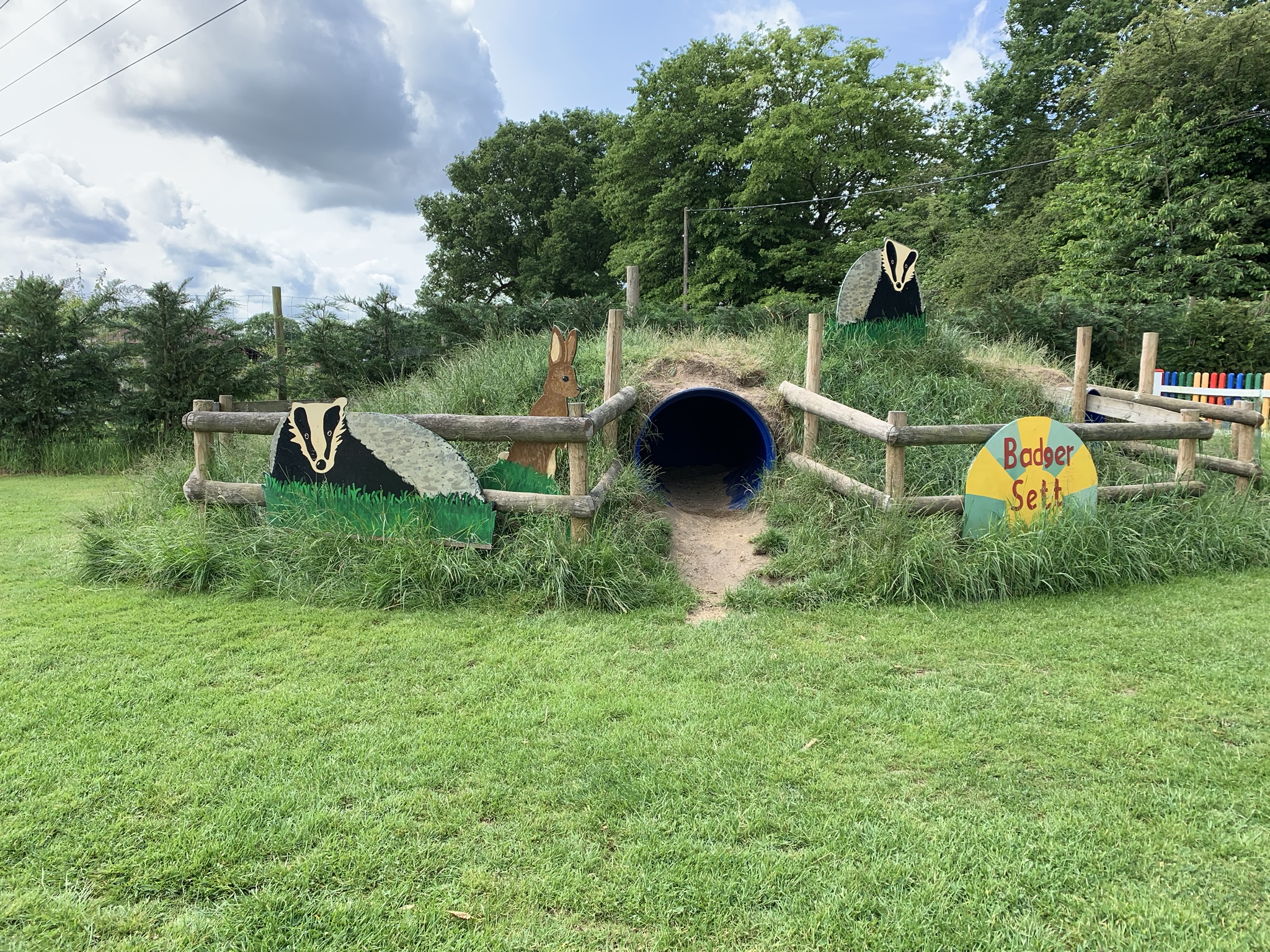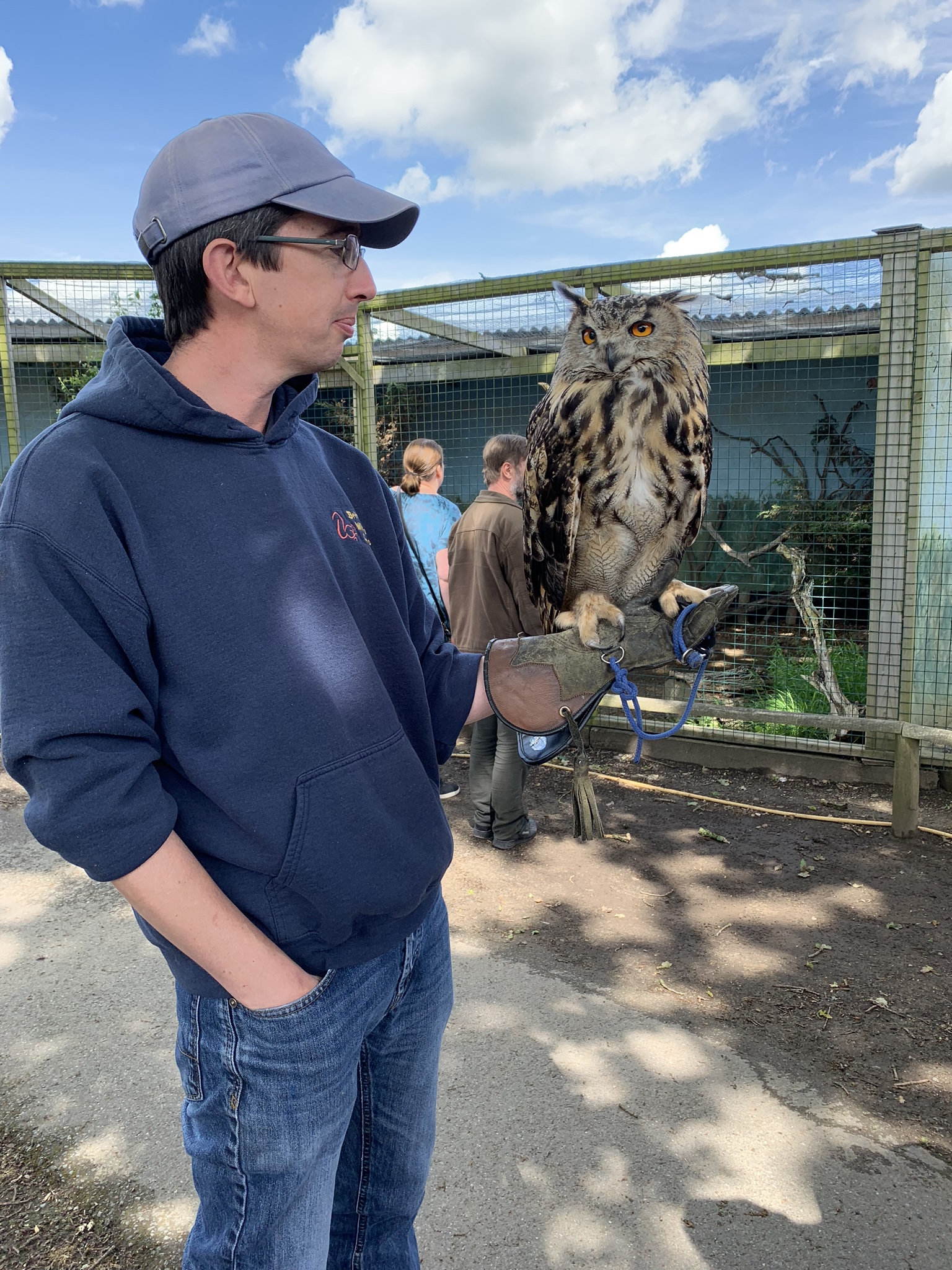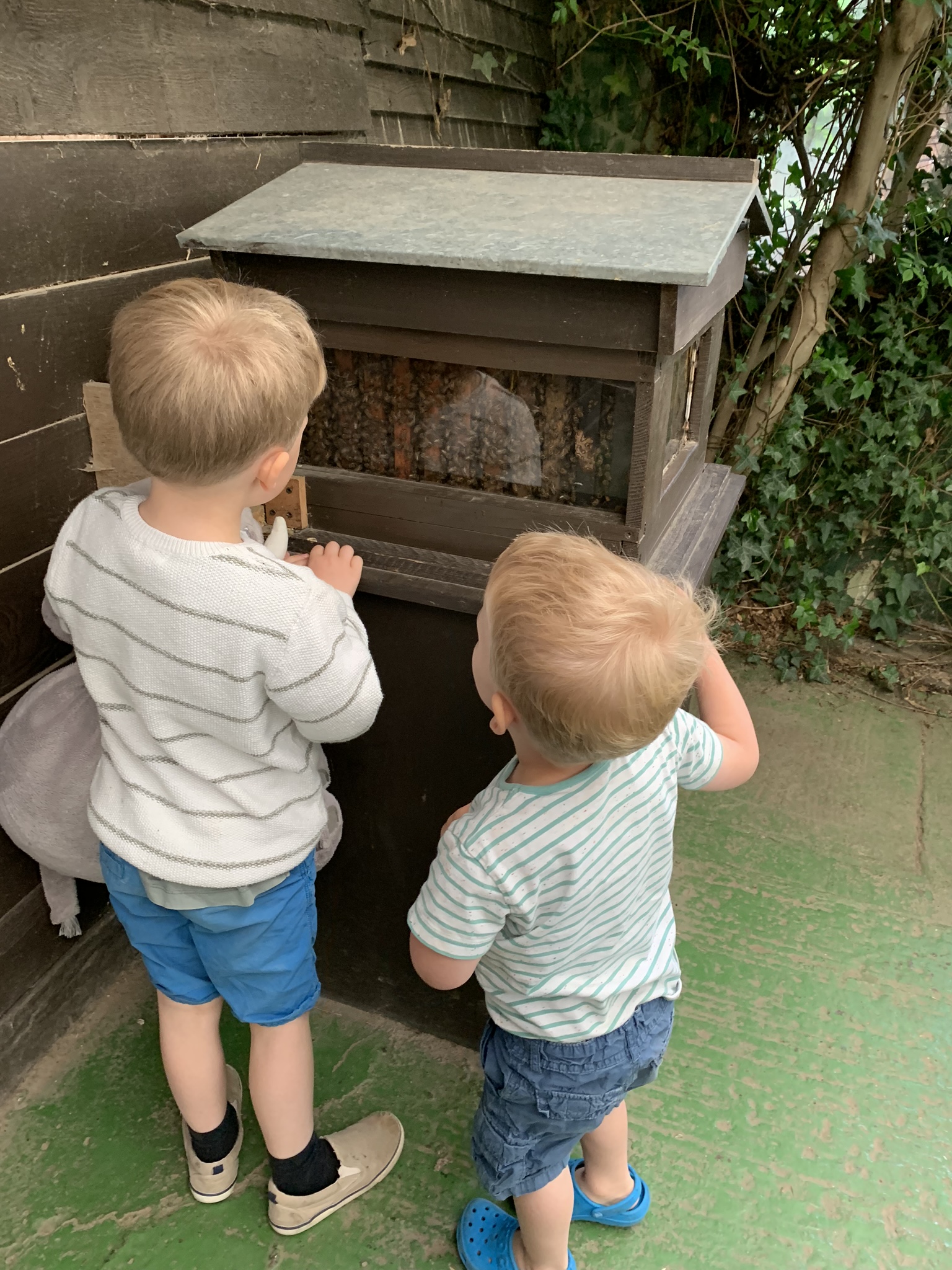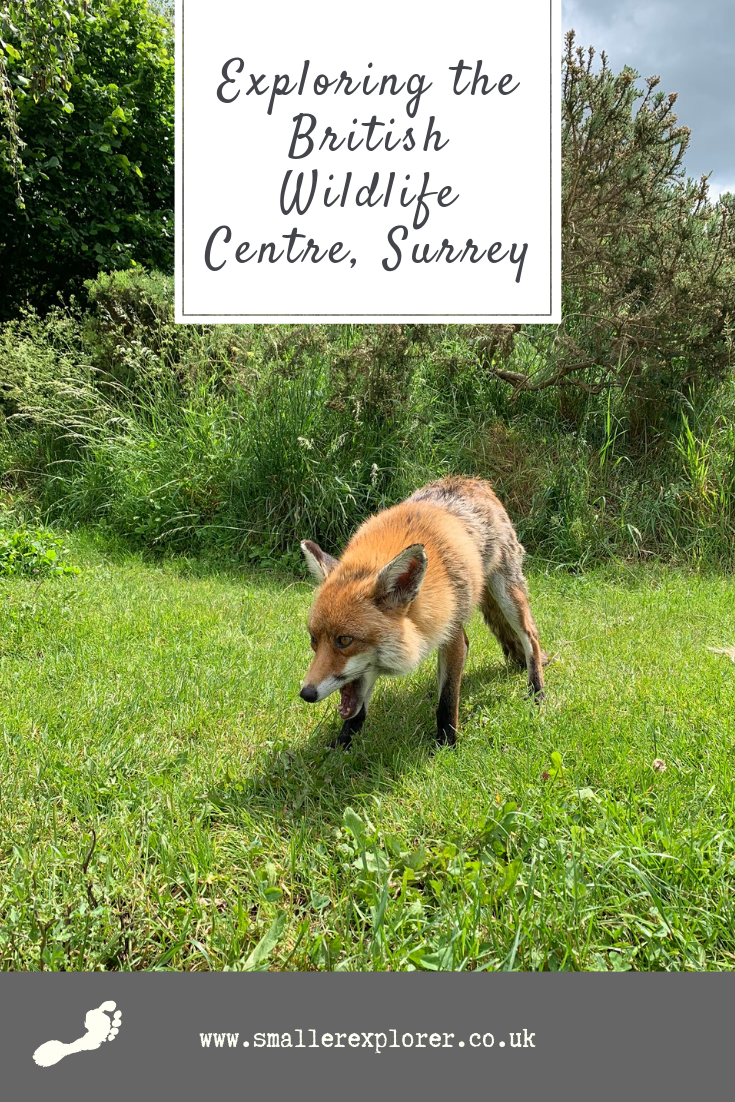The British Wildlife Centre is in Lingfield, Surrey, but only open on weekends and holidays. We’d never been before so we headed over there at the weekend to see what it was like. The British Wildlife Centre is home to over 40 native UK species including otters, badgers, foxes, deer, red squirrels and owls. It was set up in 1977 by dairy farmer David Mills, who was passionate about our native wildlife.
We were greeted with an enormous hedgehog – Snuffles – which the boys thought was funny. We bypassed the cafe and shop and headed straight for the home of the red squirrels where a talk was about to start. The red squirrels aren’t keep in captivity, they are free in the trees. We had to enter a small woodland area through two doors which took us onto a walkway around the woods.
The keeper told us about the squirrels. There are about 12 here now, along with a couple of muntjac deer. They are fairly new and are very shy and not used to humans yet, so unfortunately we didn’t spot any though we did do a couple of circuits peering up into the trees.
Red squirrels are still found in the wild, up in Northumberland and Scotland and also on Brownsea Island in Dorset. Some have recently been released onto one of the Scilly Isles too, Tresco. They used to be prolific here but unfortunately due to the release of grey squirrels into the country from America, numbers have dwindled. The grey squirrels carry a virus which they are immune to, but the reds are not. Deforestation and fragmentation of forests are also causes of decline.
The red squirrel is more agile than the grey and spends more time up in the trees than its relative. Squirrel apparently means ‘to sit in the shad of your own tail’, which is what they do when it’s chilly. Very sweet!
After the squirrel lesson, we headed up to Pip’s corner, a mini natural playground for kids, which my two loved. It’s a peaceful spot overlooking the deer, with various wooden play equipment, a sandpit and tunnel under a grassy hill. There’s also a picnic area if you want to bring a picnic with you.

Pip’s Corner playground area
We peered in on a couple of otters fast asleep in the observation room, an adder and grass snake, then over to the aviaries to see lots of owls. One keeper had an eagle owl out which my boys were actually a bit scared of. Their talons are very long up close. Over to say hello to the very tame foxes mooching about before we stopped for a rest and some lunch in the cafe.
After lunch, we went into The Hedgerow for all the mini species. I liked this bit the best, as did my two children. They loved peering in to look for hazel dormice, rats, field voles and weasel. They also were really interested in the honeybee hive, where you could see all the worker bees going in and out of the hut, hard at work!

One of the keepers with an Eagle Owl

Fascinated by the bees
The Nocturnal House and badger sett was another top experience, as we saw four badgers asleep all curled around each other, and a hedgehog curled up in the corner resting.
Finally we had a run around The Dell where kids can run up and down a small dell and balance on a fallen log.
We spent about half a day here, but you could spend longer, particularly if you listen to more of the talks. It’s a lovely place, where conservation and education come first rather than it being a place for kids, but there’s lots for kids of all ages to enjoy and we’ll definitely return.
The British Wildlife Centre is quite pricey to get in, but money does go towards the upkeep of the centre so it’s a worthwhile spend. It’s £12 for adults and £8.50 for 3-15 year olds. If you live close by you can join for the year at £60 for adults and £35 for 3-15 year olds.



1 comment
[…] A visit to the British Wildlife Centre […]